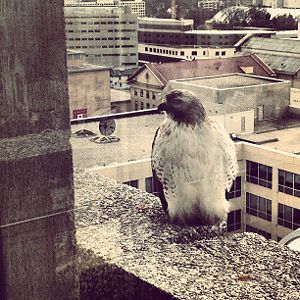Geometry and Topology Seminar 2019-2020
The Geometry and Topology seminar meets in room 901 of Van Vleck Hall on Fridays from 1:20pm - 2:10pm.
For more information, contact Richard Kent.
Fall 2013
| date | speaker | title | host(s) |
|---|---|---|---|
| September 6 | |||
| September 13, 10:00 AM in 901! | Alex Zupan (Texas) | Totally geodesic subgraphs of the pants graph | Kent |
| September 20 | |||
| September 27 | |||
| October 4 | |||
| October 11 | |||
| October 18 | Jayadev Athreya (Illinois) | Gap Distributions and Homogeneous Dynamics | Kent |
| October 25 | Joel Robbin (Wisconsin) | GIT and $\mu$-GIT | local |
| November 1 | Anton Lukyanenko (Illinois) | Uniformly quasi-regular mappings on sub-Riemannian manifolds | Dymarz |
| November 8 | Neil Hoffman (Melbourne) | Verified computations for hyperbolic 3-manifolds | Kent |
| November 15 | Khalid Bou-Rabee (Minnesota) | TBA | Kent |
| November 22 | |||
| Thanksgiving Recess | |||
| December 6 | |||
| December 13 | |||
Fall Abstracts
Alex Zupan (Texas)
Totally geodesic subgraphs of the pants graph
Abstract: For a compact surface S, the associated pants graph P(S) consists of vertices corresponding to pants decompositions of S and edges corresponding to elementary moves between pants decompositions. Motivated by the Weil-Petersson geometry of Teichmüller space, Aramayona, Parlier, and Shackleton conjecture that the full subgraph G of P(S) determined by fixing a multicurve is totally geodesic in P(S). We resolve this conjecture in the case that G is a product of Farey graphs. This is joint work with Sam Taylor.
Jayadev Athreya (Illinois)
Gap Distributions and Homogeneous Dynamics
Abstract: We discuss the notion of gap distributions of various lists of numbers in [0, 1], in particular focusing on those which are associated to certain low-dimensional dynamical systems. We show how to explicitly compute some examples using techniques of homogeneous dynamics, generalizing earlier work on gaps between Farey Fractions. This works gives some possible notions of `randomness' of special trajectories of billiards in polygons, and is based partly on joint works with J. Chaika, J. Chaika and S. Lelievre, and with Y.Cheung. This talk may also be of interest to number theorists.
Joel Robbin (Wisconsin)
GIT and $\mu$-GIT
Many problems in differential geometry can be reduced to solving a PDE of form \[
\mu(x)=0
\] where $x$ ranges over some function space and $\mu$ is an infinite dimensional analog of the moment map in symplectic geometry. In Hamiltonian dynamics the moment map was introduced to use a group action to reduce the number of degrees of freedom in the ODE. It was soon discovered that the moment could be applied to Geometric Invariant Theory: if a compact Lie group $G$ acts on a projective algebraic variety $X$ the complexification $G^c$ also acts and there is a isomorphism of orbifolds \[
X^s/G^c=X//G:=\mu^{-1}(0)/G
\] between the space of orbits of Mumford's stable points and the Marsden-Weinstein quotient.
In September of 2013 Dietmar Salamon, his student Valentina Georgoulas, and I wrote an exposition of (finite dimensional) GIT from the point of view of symplectic geometry. The theory works for compact Kaehler manifolds, not just projective varieties. I will describe our paper in this talk; the following Monday Dietmar will give more details in the Geometric Analysis Seminar.
Anton Lukyanenko (Illinois)
Uniformly quasi-regular mappings on sub-Riemannian manifolds
Abstract: A quasi-regular (QR) mapping between metric manifolds is a branched cover with bounded dilatation, e.g. f(z)=z^2. In a joint work with K. Fassler and K. Peltonen, we define QR mappings of sub-Riemannian manifolds and show that: 1) Every lens space admits a uniformly QR (UQR) mapping f. 2) Every UQR mapping leaves invariant a measurable conformal structure. The first result uses an explicit "conformal trap" construction, while the second builds on similar results by Sullivan-Tukia and a connection to higher-rank symmetric spaces.
Neil Hoffman (Melbourne)
Verified computations for hyperbolic 3-manifolds
Abstract: Given a triangulated 3-manifold M a natural question is: Does M admit a hyperbolic structure?
While this question can be answered in the negative if M is known to be reducible or toroidal, it is often difficult to establish a certificate of hyperbolicity, and so computer methods have developed for this purpose. In this talk, I will describe a new method to establish such a certificate via verified computation and compare the method to existing techniques.
This is joint work with Kazuhiro Ichihara, Masahide Kashiwagi, Hidetoshi Masai, Shin'ichi Oishi, and Akitoshi Takayasu.
Khalid Bou-Rabee (Minnesota)
TBA
Spring 2014
| date | speaker | title | host(s) |
|---|---|---|---|
| January 24 | |||
| January 31 | |||
| February 7 | |||
| February 14 | |||
| February 21 | |||
| February 28 | |||
| March 7 | |||
| March 14 | |||
| Spring Break | |||
| March 28 | |||
| April 4 | Matthew Kahle (Ohio) | TBA | Dymarz |
| April 11 | |||
| April 18 | |||
| April 25 | |||
| May 2 | |||
| May 9 |
Spring Abstracts
Matthew Kahle (Ohio)
TBA
Archive of past Geometry seminars
2012-2013: Geometry_and_Topology_Seminar_2012-2013
2011-2012: Geometry_and_Topology_Seminar_2011-2012
2010: Fall-2010-Geometry-Topology
